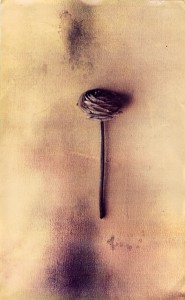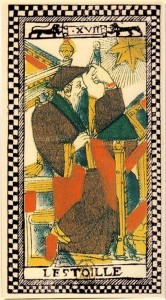2000-2001: Magnificat’s Ninth Season
Magnificat’s ninth Season began earlier than usual with a week of recordings at St. Stephen’s Episcopal Church in Belvedere in August. All the works by Chiara Margarita Cozzolani that Magnificat had performed on the San Francisco Early Music Society series the previous December were recorded plus two new psalms and a motet, Maria Magdalene stabat. The sessions ended with a performance for a small invited audience. The sessions were such a success that the decision was made for Musica Omnia to release not merely a Vespers CD but to undertake a project to record Cozzolani’s complete works and another week of recordings were planned for January.
 The season officially opened in September with a program devoted to settings of texts from the Song of Songs, a rich source for composers throughout the 17th century. While Magnificat’s program most often are focused on a single composer, style, or historical event, this program, entitled “Sonnet vox tua in auribus meis,” featured settings in a variety of genres and from several composers. After an opening motet from Palestrina’s fourth book of motets for 5 voices, the program was divided into four “chapters,” each beginning with one of the four “seasons” of Charpentier’s soprano duet Quatour anni tempestes.
The season officially opened in September with a program devoted to settings of texts from the Song of Songs, a rich source for composers throughout the 17th century. While Magnificat’s program most often are focused on a single composer, style, or historical event, this program, entitled “Sonnet vox tua in auribus meis,” featured settings in a variety of genres and from several composers. After an opening motet from Palestrina’s fourth book of motets for 5 voices, the program was divided into four “chapters,” each beginning with one of the four “seasons” of Charpentier’s soprano duet Quatour anni tempestes.
The “Spring” set included Monteverdi’s Nigra sum from the 1610 Vespers and a five voice motet by Orfeo Vecchi. “Summer” featured Grandi’s alto motet Quam pulchra es and another motet from Palestrina, Descendi in hortum nucum. Monteverdi’s motet O quam pulchra opened the second half of the program followed by “Autumn” and a setting of Vulnerasti cor meum by Alba Tressina and Schütz’s Ego dormio. “Winter” included Carissimi’s Anima-Corpo dialogue Tolle sponsa and a remarkable dialogue by Domenico Mazzochi. The program cover featured the altar artwork from St. Gregory Nyssen Episcopal church in San Francisco.
The December concerts explored an almost completely forgotten repertoire. Beginning in the 1670s the Vatican began commissioning a new musical work each year to be performed between vespers and the Christmas Eve feast. The tradition continued well into the 18th century, with many eminent composers receiving the commissions including both Alessandro and Domenico Scarlatti, Porpora, Gasparini, and Caldara. Only two of the twenty four cantatas written before 1700 have survived and the music for both was written by Giuseppe Pacieri. Born in Trevi near Perugia, Pacieri took holy orders before succeeding Francesco Cardarelli as organist of the Santa Casa in Loreto in 1670, where he remained until 1679. He entered the service of Cardinal Cibo in Rome by 1682, and it is most likely this connection that brought him six Cristmas Eve commissions. Il Trionfo dell’ Amor Divino was written for Christmas Eve in 1687 and was performed again in 1692 at St. Ursula in Vienna and it is thanks to this second performance that the work survives, since the only extant score is to be found in Vienna. The elegantly bound manuscript produced as a presentation copy to accompany the performance was used as the basis for Magnificat’s performing edition in what was certainly a modern premiere.
Il Triojnfo dell’ Amor Divino is an allegorical discussion of the significance of Christ’s birth, with singers representing Divine Love, Faith, Humanity, Idolatry, and Hell. Divine Love reassures Humanity that with the aid of her trusted friend Faith, she will withstand the tyranny of the infidel and eternal damnation. Stylistically, Pacieri’s cantata falls somewhere between the Roman style of Marazzoli and the Neapolitan operatic style of Scarlatti.
 The second week of Cozzolani recordings took place in January of 2001, coordinated with the repertoire for concerts in February. The remaining psalms and the second Magnificat from the composer’s 1650 collection Salmi a Otto voci concertati were included in a program built around Vespers for the Feast of Purification.
The second week of Cozzolani recordings took place in January of 2001, coordinated with the repertoire for concerts in February. The remaining psalms and the second Magnificat from the composer’s 1650 collection Salmi a Otto voci concertati were included in a program built around Vespers for the Feast of Purification.
The program for the February concerts featured artwork by Ronald Chase that would be used for the first two Cozzolani releases. After trying out several ideas with Ronald in his studio, I noticed several framed flowers on on his wall. At first I assumed that they were paintings and was surprised to find out that they were in fact photographs that had been manipulated with a thoroughly “historical” device – a “xerox” machine! The works are described in this article and a gallery of Ronald’s flowers can be viewed here.
The season ended with two divertissements by Marc-Antoine Charpentier: Actéon and Les Arts florissants, written during the 1680s, while Charpentier was employed in the household of Marie de Lorraine, called Mademoiselle de Guise. Both works fit into the loosely-defined genre of the divertissement, a term used in 17th Century France to refer to a wide range of musical works, from interludes in comedie-ballets and tragedie-lyriques, as well as entertainments that resembled the English masque. Some divertissements, like Actéon, were short independent operas on mythological subjects. Others, like Les Arts Florissants relate more specifically to the pastorale, originally a literary genre that, over the course of the 17th century began to incorporate music and ballet in the manner of opera.
 The brochure for the season featured the image for the Star from a 17th Century Tarot deck. This deck also provided the “cats” found on many Magnificat brochures and programs.
The brochure for the season featured the image for the Star from a 17th Century Tarot deck. This deck also provided the “cats” found on many Magnificat brochures and programs.
Over the course of the season, Artistic Director Warren Stewart led ensembles that included Elizabeth Anker, Peter Becker, Meg Bragle, Louise Carslake, Elijah Kenn Chester, Karen Clark, Rob Diggins, John Dornenburg, Jennifer Ellis, Ruth Escher, Ken Fitch, Andrea Fullington, Julie Jeffrey, Jennifer Lane, Karen Marie Marmor, Mathias Maute, Marc Molomot, Judith Nelson, Deborah Rentz-Moore, Jörg-Michael Schwartz, Katherine Shao, Mary Springfels, David Tayler, Hanneke van Proosdij, Jolianne von Einem, Suzanne Elder Wallace, Catherine Webster, Scott Whitaker, and David Wilson.